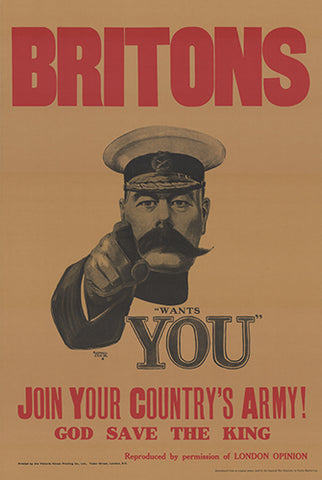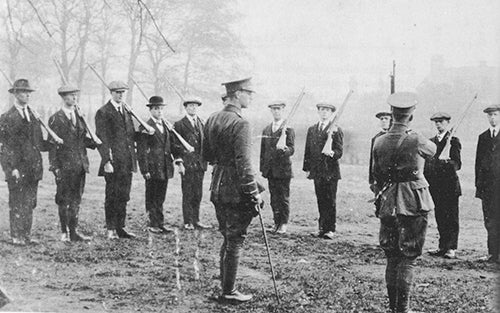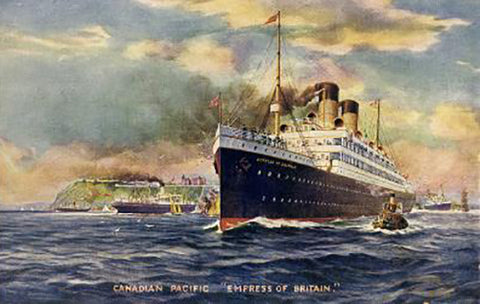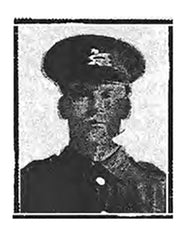
The SOMME -Remembering My Great Grandfather Walter Jordan
Share
Signing Up.


Eventually they were relocated to Fovant camp, moving by train at night to avoid detection by the enemy and often marching great distances. They trained at Fovant for 2 1/2 months, believing they would be going to France.
Later, regimental badges were carved into the chalk hillsides and can still be seen today.
Finally, at the beginning of December, orders came to prepare to move out but no details announced. It was only when the Pals were already at sea that they learned they were on their way to Egypt.
Egypt, Port Said and the Suez Canal:
Again moving by night for security, the Pals travelled by train to Liverpool docks to board the R.M.S. Empress of Britain

Normal capacity on this ship was 1,860 passengers but now nearly 5000 men were packed aboard. She set sail on 7th December 1915, initially escorted down the Irish Sea by two destroyers which soon peeled away. 6 days later the ship collided with the French steamship Dajurjura, both vessels were sailing a zig-zag course without lights to avoid the German submarines. The French ship sank and the Empress of Britain sailed on to Malta for repairs and supplies. Leaving Malta 3 days later, the ship sailed on towards Port Said on the Suez Canal, being shot at twice by German U-Boat torpedos which only narrowly missed their target.
By arriving for active service in a Theatre of War on 22nd December 1915, the men qualified for the first of the three ‘Pip, Squeak and Wilfred’ Great War service medals, the 1914/15 Star. Their function was to defend the Suez Canal against attacks by the Turks and they did that until 1st March 1916.
“The sand where we are encamped is full of ants and sand lice. We are getting lousy by now, but it does not matter. I am as happy as a mud lark”
16/127 Sergeant Harold Saville M.M.
France and The Western Front:
On the 7th March the men disembarked in Marseille and saw their first Germans, prisoners of war working in the docks. Painfully slow train journeys followed as they made their way north towards the front line and the Somme. They received a very warm welcome from the beleaguered French people.

In April, the 16th West Yorks were on the front line at Redan Ridge. The Germans had had over 18 months to develop their defenses atop a natural geographical advantage. When the Pals got there, they found their own trenches poorly made and dominated from above by German positions that were heavily defended by machine gun posts using triangulated cross fire. British Intelligence had seriously underestimated the scale and power of the German batteries.
A complicated plan was formed, that required each Battalion to go over in order and achieve certain goals. The men practised the drill and on the 1st July, at 7.30am (Zero Hour), the big push was to commence.
“Good luck, men. There is not a German left in their trenches, our guns have blown them to Hell” Major General Robert Wanless O’Gowan, GOC 31st Division.
At 7.30am the whistles blew and the 16th West Yorks went over the top.
“The German machine gun fire was terrible. Our Colonel was hit after only a few steps along the trench” Private W.H.T. Carter, 16WY
“As soon as you attempted to get out of the trenches you were fired on”. Private G. Grunwell, 16WY
The 16th West Yorks War Diary records 22 officers and 675 men went into action on 1 July 1916. On 5 July it records a casualty rate of 100%.
Overall, on that one day, nearly 60,000 men were injured and nearly 20,000 lost their lives. The worst losses in British military history.
The 16th West Yorks position as lead battalion meant they had longer exposure to enemy fire and difficulties in bringing in the wounded. It also affected the recovery and identification of the bodies for burial. From the 16th West Yorks alone, 122 men are recorded on the Thiepval Memorial to the Missing.
One of them is Walter.

This is the only photograph I have been able to find of him so far. I am also looking for his medals (the Pip, Squeak and Wilfred) and any other information about his life. If you can help, please, please do get in touch via my contact page.
Ellie
To find out more about the Bradford Pals, I recommend this incredibly well researched book ‘Bradford Pals’ by David Raw.


1 comment
My great grandfather , John Will , was also in the Bradford Pals ; reg no 16/87 ; killed in the battle of Arras May 1917 , survived the Somme . A weaver , his family came from Germany ironically , husband to my great gran Elma ; she had the brass tobacco tin , medals and diary he kept whilst in Egypt ( I have a copy of it ) all now in York military museum .